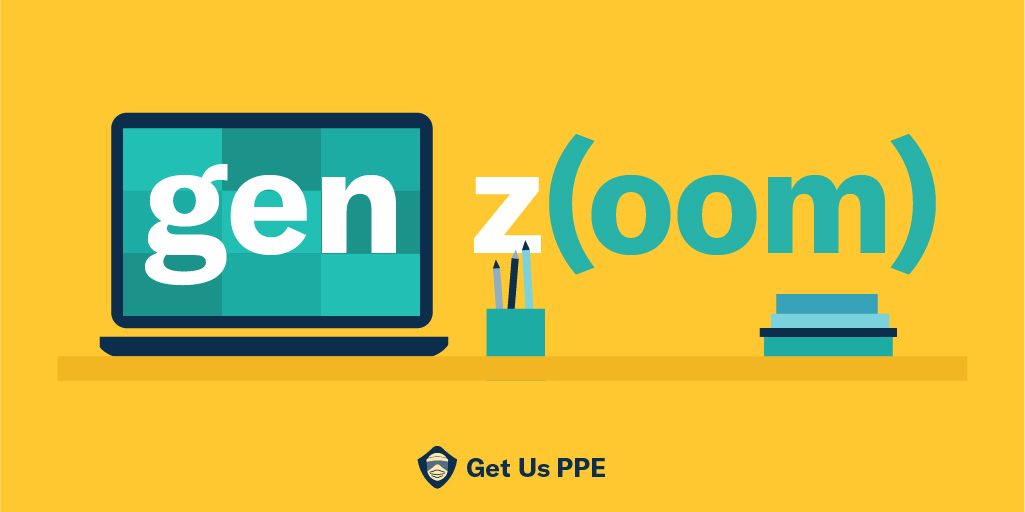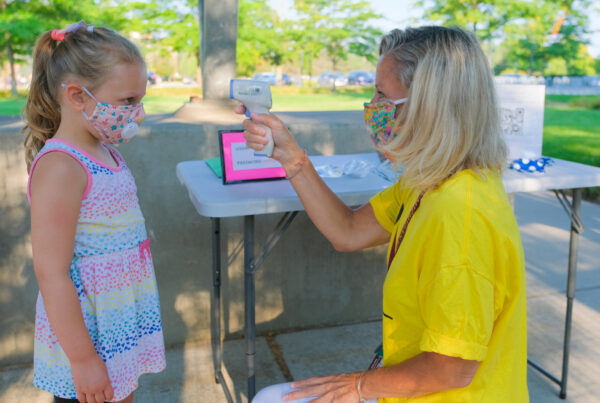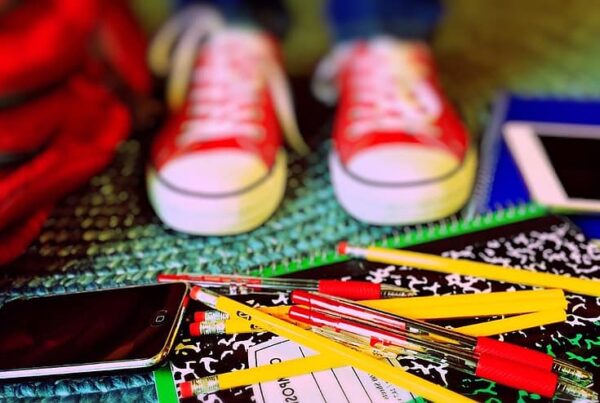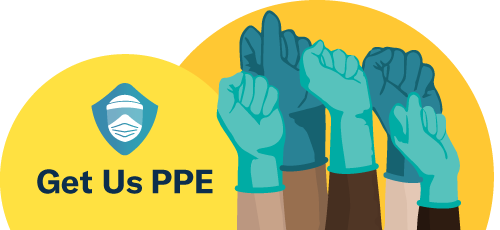
Welcome to Get Us PPE’s new series, Generation Z(oom): High school senior Anna Dai-Liu chronicles the historic 2020-2021 school year from the perspective of students, teachers, and others to learn how the pandemic is changing education.
By Anna Dai-Liu
There’s a pair of heels in the top shelf of my closet that sit untouched. They were supposed to click across the hall of a museum, or tap across the tiled floors of a dance floor, or patter across a field of grass quickly before the knife-like stilettos began to sink into the mud. Now the only floor they ever touch is the brown musty cardboard on the inside of their box.
This is my senior year. It’s supposed to be the fun year, yeah? Senior cruise, broomball, portraits, getting to sit at the best lunch tables, being in the center of the Black Hole (our cheering section at games), prom — all the things I’ve been hearing about from the moment I stepped into high school. But that’s all gone this year, all a thing of the past. (And even if we do have a prom, it’ll be nothing short of awkward: students hovering in individual bubbles six feet apart and masks obscuring most of our faces.)
Over half of California students won’t be going back to school, at least not at the beginning of the year, due to state regulations for reopening. Schools and camps, as we’ve seen from unfortunate incidents in Georgia, North Carolina, and several other states, are breeding grounds for the novel coronavirus, especially due to the indoor movement of aerosols, as modeled in a study by the University of Minnesota. And it’s not just students that are at risk — teachers, staff, and faculty are just as much in danger of catching the virus and becoming seriously ill.
However, in certain parts of the U.S. where the spread of COVID-19 is under control (or sufficient to the point that their governors have deemed it safe to reopen), there are kids going back to school. I have friends from New York and other cities that were once COVID-19 hotspots now returning to their classrooms. I’ve seen images of masked students walking through halls, sometimes socially distanced and sometimes, unfortunately, not.
The data we’ve collected at Get Us PPE shows that frontline workers are still facing major shortages of personal protective equipment (PPE) across the country. On our website, essential workers can register their PPE needs. We currently have over 16,000 requests in our database for over 2.1 million units of PPE, from all 50 states and some U.S. territories. Our data shows that frontline facilities — as of August, before schools even began to open — were already in dire need of all types of PPE, from N95s to hand sanitizer. Which begs the question: With millions of students coming out of lockdown and an expected surge in cases, do we have enough PPE to meet this demand? Do we even have enough PPE to cover our teachers, let alone all of these students?
Well, according to The Relentless School Nurse, the answer is no.
The Relentless School Nurse, if you don’t know her, is Robin Cogan, a nationally certified school nurse from New Jersey. Not only are healthcare workers still in a PPE crisis, she tells me, but many school nurses sent what PPE they had to aid them, leaving both schools and acute care facilities in the same shortage.
According to Robin, there are five key precautions that can help keep schools safe: wearing a mask, watching your distance, staying home when sick, contact tracing, and washing hands. They may seem logical from the outset, but Robin points out that, “it seems that not wearing a mask is now a political statement.” In addition, if there is no state requirement for masks, some schools are making it optional. I know that when my district, Poway Unified, was making plans to return in July, they refused to make masks mandatory because neither state nor federal governments have put that into law. (A little bit of context, for the curious reader: in late July, we were given the option to choose between in-person or virtual classes, the district believing that we would be off the watchlist by the time we began classes two weeks later than planned. The plans for in-person class were vague and not well specified, and some of the students at my school, including me, worked on a petition to send to the district that included plans, complaints, and ideas to demand better protection. In the end, this was pointless, because it turned out we couldn’t go back at all.)
The use of PPE, which we know can prevent transmission of the virus in crowded environments like schools, brought its own complications: Masks may have to conform to dress code. For example, neck gaiters that cover all of the face except the eyes are being prohibited in some schools. Some students and teachers may opt for goggles or face shields. Clear barriers (like the ones you may be seeing on checkout counters in stores these days) may be put up around desks. But all of that, as we know, costs money that school districts might not have. Plus, there may not even be enough in the existing supply to satisfy demand.
At Get Us PPE, our healthcare outreach team is contacting teachers and school administrators to gather data on their PPE needs. We’re planning to distribute as much PPE as possible to the schools that need it most, with a focus on Title I schools (where most students receive free or reduced-price lunches) and schools in COVID hotspots. $50,000 has been set aside for grants to maker groups that produce PPE for schools. In fact, we’ve already begun distributing these grants, such as one to produce thousands of face shields. And our newly launched fund, PPE for Schools, lets people donate directly to our efforts.
As of now, Robin tells me, “some districts do not have enough to ensure that everyone has what they need to begin face-to-face learning”, and there are no national or even state guidelines regarding the distribution of PPE among schools, further complicating this process. Funding has been allocated through the Coronavirus Aid, Relief, and Economic Security (CARES) Act, but schools must apply individually to receive that aid, and “it is not sufficient to retrofit schools, fix broken HVAC (heating, ventilation, air conditioning) systems and the many COVID-19 systems that must be in place to keep everyone safe.” This, she says, is probably one of the biggest challenges preventing schools from being able to reopen safely.
The most “confounding” thing, Robin tells me, is the lack of clear national response or involvement in this process of reopening schools. There’s a set of CDC guidelines, but each state’s Department of Education and Health also has their own guidelines, which might conflict with the federal ones. This just serves to further complicate this process, confusing districts and schools and forcing them to interpret safety measures for themselves yet again.
Already, some schools have begun classes, some with proper precautions and others without. There have already been issues with students partying and disregarding precautions. This has been one of the concerns at my school: As much as parents and school staff would like, there is no way to perfectly police students. I feel like it’s a sort of honor system — that we should have to put in the work of wearing masks and protecting ourselves and others if the schools trust us enough to reopen — but I know not everyone thinks that way, and there’s always the chance that no matter how careful we are, those precautions won’t work. That’s why, when given the decision back in July, my family chose to go virtual.
Just a few days ago, we received the news that San Diego County has been taken off the state watchlist. That means we’re now open ground for reopening, and so I’ve just been wondering: What will the district do? Are we going to take the risk of going back? Whatever happens, it’s clear that this year is not going to be a normal senior year, whatever normal means anymore.
For now, I’ll just leave the shoes to collect the dust in their box — just as I’m not really ready to re-enter a classroom, I’m not sure I’m ready to run the risk of taking those shoes out and getting them dirty quite yet.




